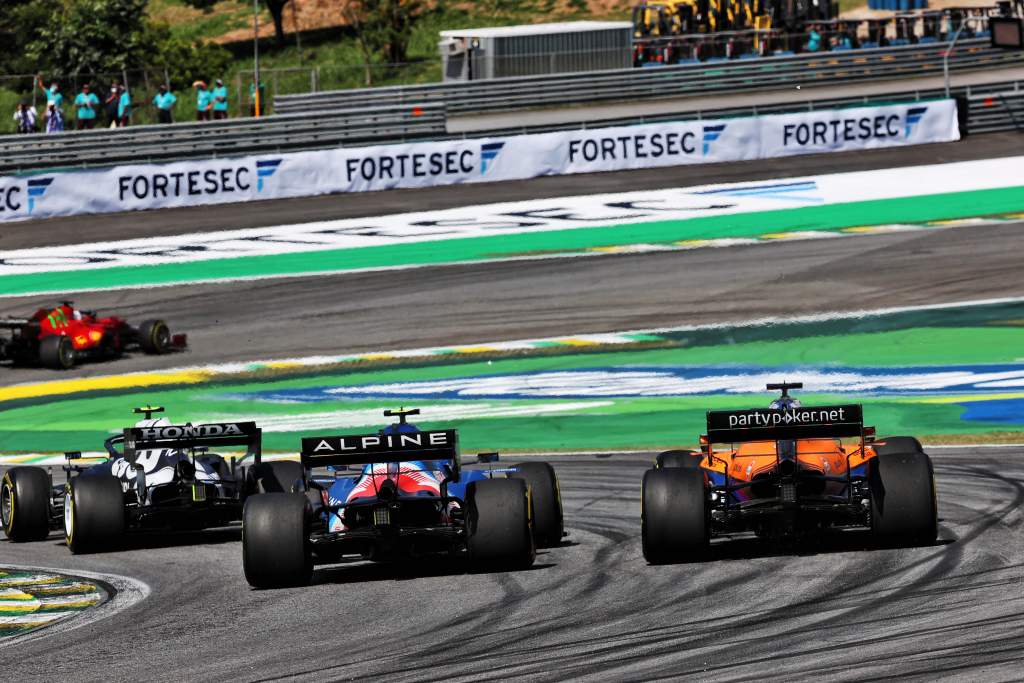Up Next

Formula 1 rule changes can have a profound impact on the competitive order and the new 2022 ruleset will be no exception.
F1’s 2022 changes are the most significant in years, with Red Bull technical supremo Adrian Newey describing this as “the biggest single regulation change” in four decades.
So that means there’s a big opportunity for the teams who were not in the title fight last year to take a leap forward.
But which of last year’s midfield pack will be best placed in the coming season? We must wait for the real 2022 cars to hit the track to start to draw any definitive conclusions. But what we can do is evaluate the relative strengths and weaknesses of the likely contenders – and their recent trajectories – to predict which has the best chance of being at the front of the midfield, and therefore in a position to emerge as a consistent frontrunning team. Whether they live up to their potential is another matter.
While we can’t entirely rule out one of 2022’s strugglers leaping to the front, the chances of Haas, Williams or Alfa Romeo making the jump in one go are minuscule.
So we will focus on the five teams that comprised the midfield pack last year and rank them from least to most likely to join the fight at the front.
5 – AlphaTauri
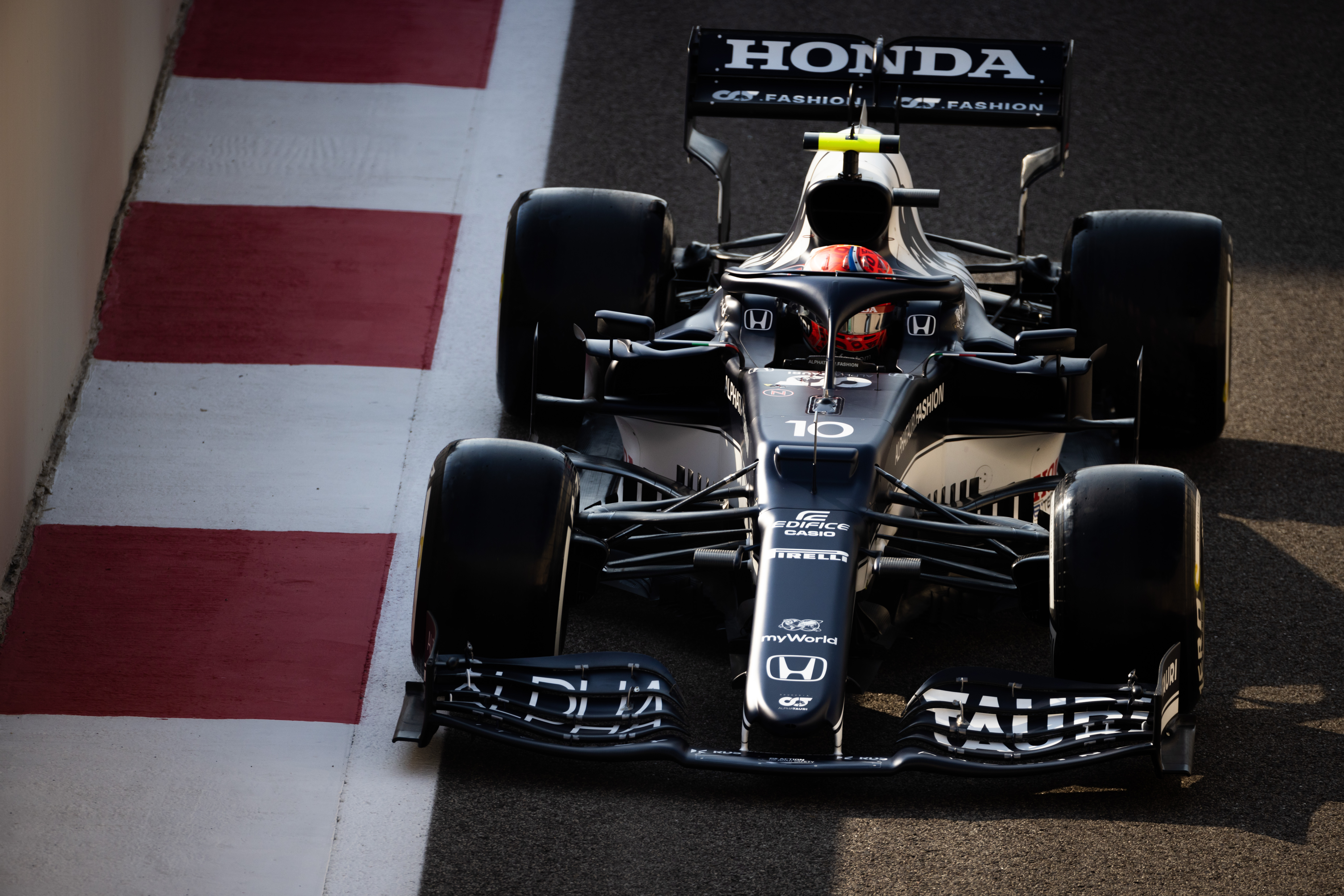
AlphaTauri often had the third-quickest car during the 2021 F1 season and could mix it with Ferrari and McLaren, but a mixture of squandering too many chances and not being able to maintain that pace consistently meant it was obliterated by those two rival teams in the constructors’ standings and even lost fifth to Alpine.
However, 2021 still marked an impressive high point in the former Toro Rosso outfit’s upward trajectory since it switched to Honda power in 2018. Last year, it finished sixth in the constructors’ standings and more than quadrupled its 2018 points total – a year in which it finished ninth.
AlphaTauri was also able to fully focus on its 2022 car in the second half of the year in terms of its aerodynamic testing.
It also has the benefit of the design and development work being done in a 60%-scale windtunnel as it switched last year to sharing Red Bull’s facility. Last year’s car was originally produced using the 50% scale tunnel in Bicester, so the team does have more potential in its facilities.
Given recent progress, AlphaTauri can’t be discounted – especially as Honda put plenty of effort into the 2022-specification power unit before handing it over to Red Bull Powertrains.
But considering how strong AlphaTauri was last year and the significant resource advantage of its midfield rivals, even to hold station in terms of performance would be a great success given the potential of the teams around it.
What will be crucial is that, unlike in 2021, the team is able to make the most of the performance it has rather than underachieving. But it’s that comparatively weak execution and lack of resources that makes AlphaTauri the least likely to break into the lead group.
4 – Alpine

Alpine should already be at the front of the F1 field based on the original timeline set out when Renault took over the Enstone outfit in 2016.
That evidently has not happened and Alpine CEO Laurent Rossi has subsequently recalibrated that target for 2024 – with a raft of recent leadership changes a part of the plan to achieve that goal.
But despite such aggressive managing of expectations, this doesn’t mean 2022 has been written off. Alpine had the sixth-fastest car last year and finished fifth in the constructors’ championship thanks to its well-balanced driver line-up of Fernando Alonso and Esteban Ocon. It even bagged the outfit’s first victory since 2013 – Ocon’s slightly fortuitous one in the Hungarian Grand Prix.
Fundamental to Alpine’s 2022 prospects will be the success of the new Renault power unit which will finally adopt the split turbo concept pioneered by Mercedes back in 2014.
It’s impossible to know how big a step Alpine will make with its car, or Renault with the engine, but what’s clear is that for this package to live up to its potential both need to take a big step. The engine performance will be key given Renault was reckoned to be the weakest of the four engine suppliers last year.
While Alpine can’t be discounted from making a big stride forward, the need for big engine gains and the fact that the team itself is still going through changes suggests that 2022 might have come too soon for it.
3 – Aston Martin
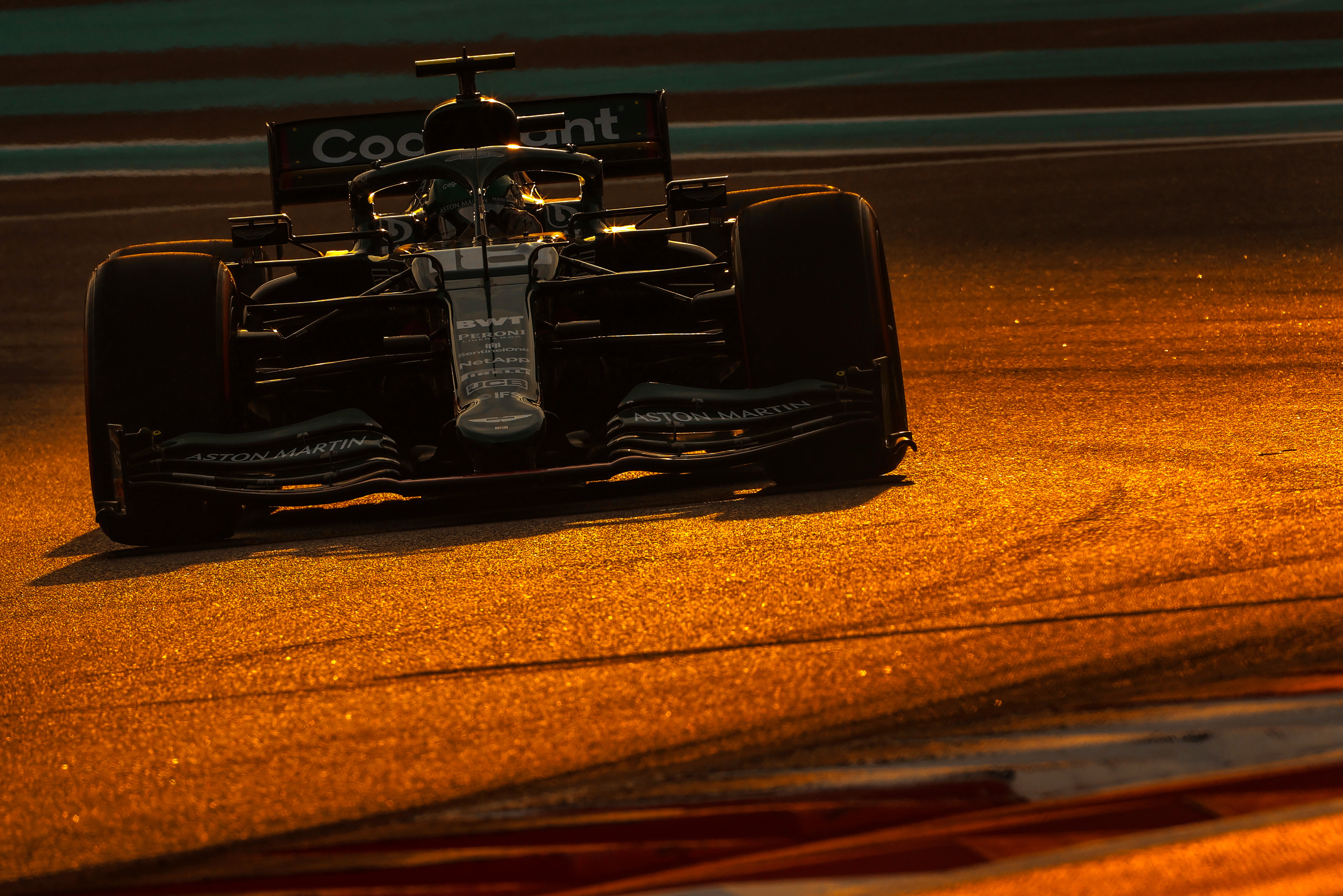
Aston Martin’s bruising 2021 season curtailed what was otherwise a highly-successful giant-killing run of seasons for the former Force India/Racing Point outfit in the turbo-hybrid era.
This was in part due to the four small – but significant – aerodynamic changes for the 2021 season that negatively impacted the low-rake cars of Mercedes and Aston Martin.
Unlike Mercedes, Aston Martin had little to fight for in 2021 so its attention soon switched to its 2022 machine. That decision left it seventh in the constructors’ championship with 118 fewer points than it scored the year before – a season with five fewer races.
Therefore you’d expect Aston Martin to make a step forward in 2022 – but the question is just by how much?
The team’s expansion plans made headlines throughout 2021 with a new factory that will be built on its Silverstone site and a brand new windtunnel. But the latter won’t be up and running until 2024 so it may be too soon for Aston to reap the rewards of its structural expansion.
On the personnel side, it’s acquired former BMW motorsport boss Mike Krack to succeed Otmar Szafnauer as team principal and has made a number of high-profile technical signings, although most of those have had no input on the design of the 2022 car. For example, Red Bull’s head of aerodynamics Dan Fallows, whose signing was announced back in June 2021, won’t officially start until this April.
In 2020 and 2021, Racing Point/Aston Martin ran and developed a copy of the 2019 championship-winning Mercedes. If it can combine what it learned from that with the technical strength that made it F1’s great over-achiever in the Force India and Racing Point days and harness the improved resources, that should mean a significantly improved car.
But while it’s a team on the up with a target of emerging as a championship-challenging outfit in three to five years, 2022 is surely too early to expect it to be at the front. A strong midfield season will be the minimum expected and is perfectly realistic.
2 – McLaren
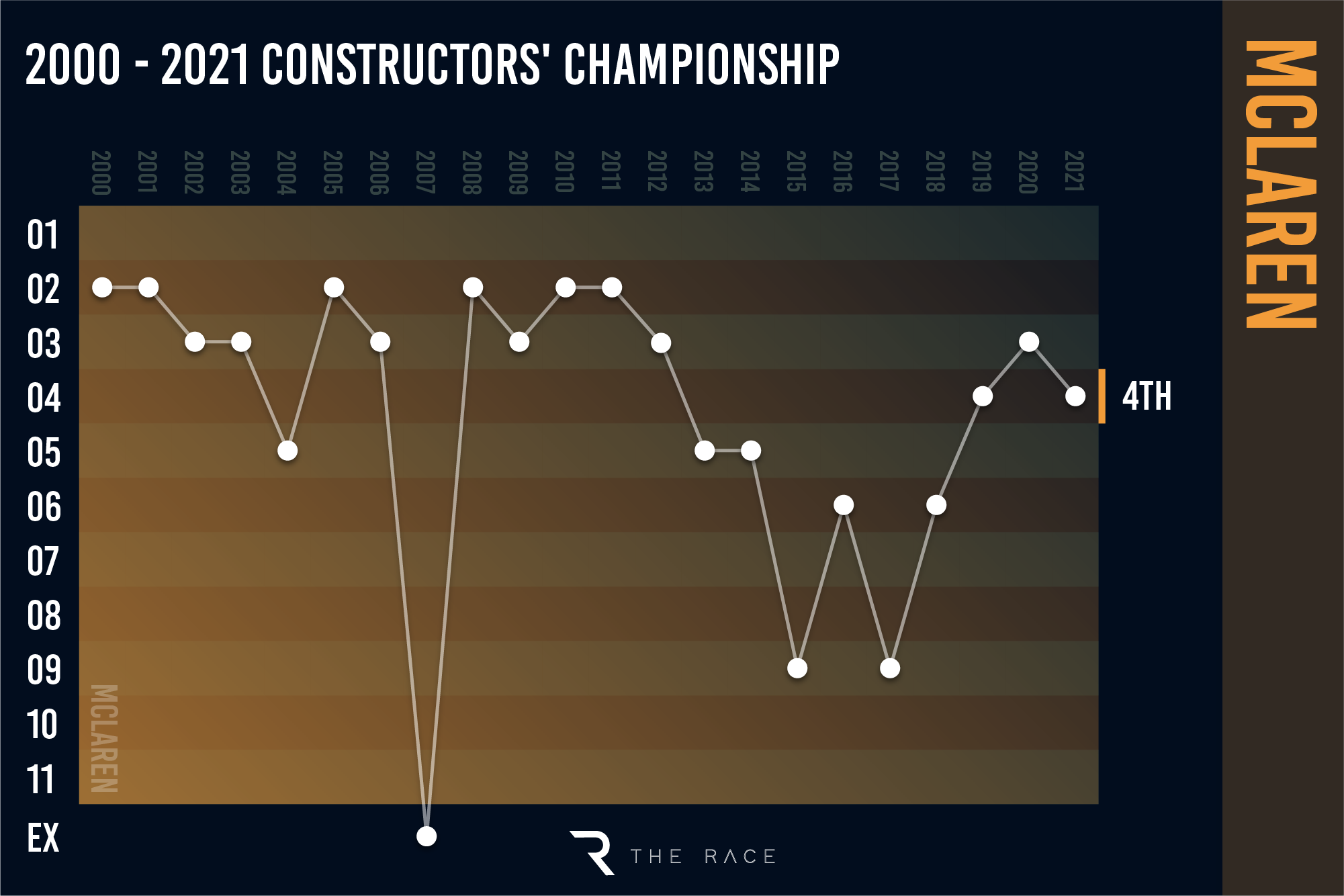
McLaren has easily had the most dramatic rise and fall over the past decade, but its rise back to the front of the F1 field isn’t quite complete yet. The question is can McLaren achieve that final step in 2022?
Well, it’s helped by the fact this will now be the second car designed with the Mercedes power unit that it switched to for the 2021 season, and the car will benefit from the expanded design team headed by James Key.
Crucially the team believes it will have a facility deficit until 2024, with “no excuses” to not be fighting the likes of Mercedes and Red Bull by then.
The team is building a new windtunnel so that it can pivot away from the ex-Toyota facility in Cologne that it’s using now, but that will be of no benefit to its progress in 2022.
What will benefit the team is the upward mobility it has gained in recent times after three painful wilderness years with Honda, with Daniel Ricciardo claiming the team’s first victory since 2012 last year at Monza.
The Italian GP showed that when this current McLaren team has a car capable of winning a race, it can deliver – even if the following round in Russia left some doubts.
The team took a step back in 2021 championship-position-wise (third to fourth place), but importantly it closed the performance gap to the front and many of its five podiums were on merit.
That means while Aston Martin and Alpine also have major infrastructure changes in the pipeline, McLaren’s technical and personnel shake-up has already happened and had time to develop. On the evidence of 2021 at least, McLaren simply looks more like a team ready to fight at the front.
1 – Ferrari
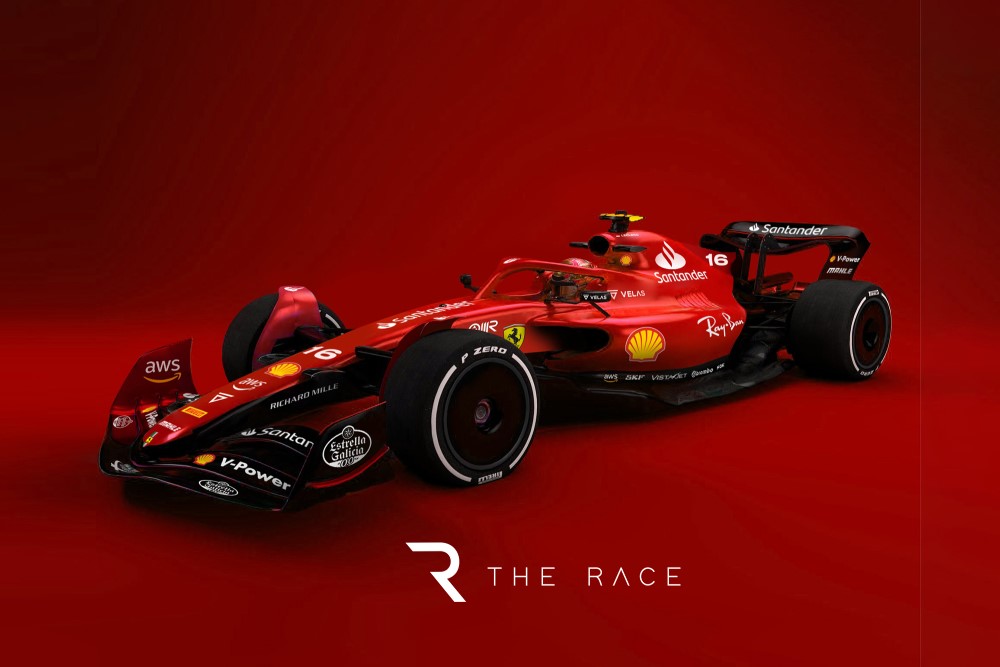
A miserable 2020 was followed by a far more impressive 2021 season in which Ferrari collected two pole positions and five podiums and beat McLaren in a season-long fight to third place in the constructors’ championship.
Given that recovery, its existing infrastructure and the fact it was fighting for wins only three seasons ago, Ferrari has to be the best placed of the midfield pack to break out and join the fight at the front.
The team has the benefit of a new driver-in-loop simulator that it claims represents a “generational leap” and improved its ways of working. As a result, team principal Mattia Binotto has promised a car that features what he calls “significant innovations”.
During 2021 there were also significant improvements made to the power unit that was a key cause of its 2019-20 decline, and there are more improvements coming for 2022 – particularly on the internal combustion engine.
Ferrari is hoping its new engine package, which is currently believed to be the third-best in F1, can challenge the Mercedes and Red Bull-prepared Honda engines.
Charles Leclerc and Carlos Sainz also proved to be arguably the most effective driver line-up on the F1 grid last year, so Ferrari can be confident that if it can produce a package capable of fighting at the front again, its drivers will be able to make the most of it.
Ultimately Ferrari looks to be best poised to break out of the midfield fight in 2022 with a stronger existing foundation than many of its rivals who may not join the fight at the front for another couple of years.


